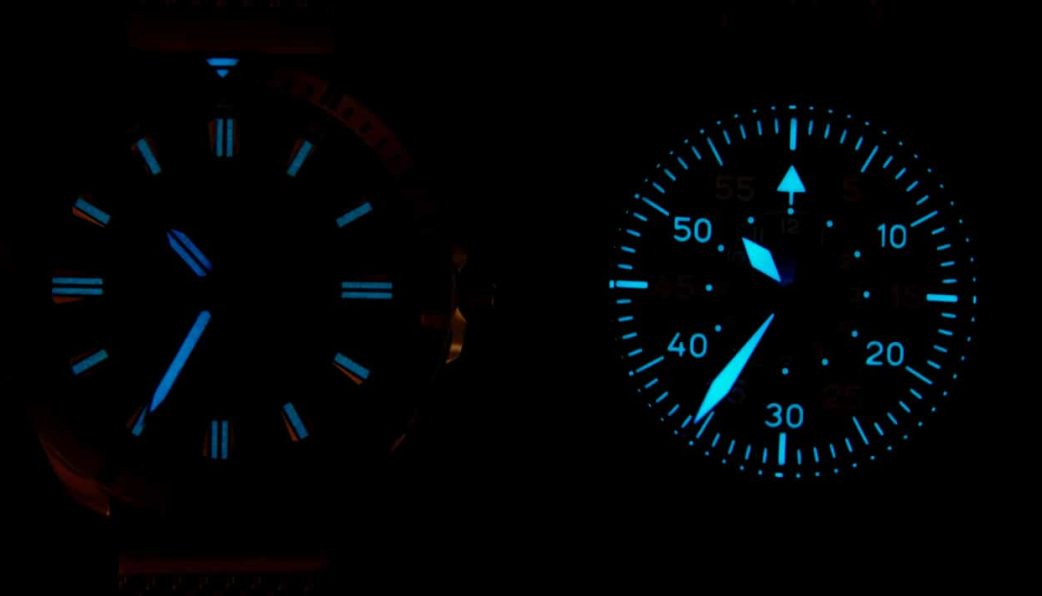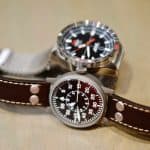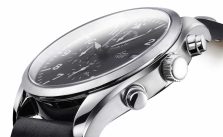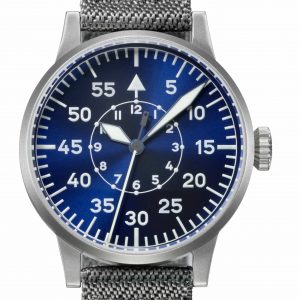Super Luminova: Compare Almaz vs Paderborn

You may have noticed in the specifications of several of our watches the following words: "Super Luminova® treated hands and dial". What about this product? Do all watches bearing this mention have the same readability?
Super Luminova®: let there be light!
Luminova or Super Luminova?
LumiNova® is a phosphorescent pigment based on strontium aluminate (strontium oxide aluminate). It differs significantly from previously used pigments based on zinc sulphate or radioisotopes. A phosphorescent pigment acts as a light accumulator, slowly restoring the light energy to which it has been exposed.
LumiNova® was invented and is developed by NEMOTO & CO. LTD., The Japanese world leader in phosphorescent pigment. This more effective pigment was invented in 1993 to regain the illumination of radioactive substances now banned: the goal is to hold a whole night without re-exposure to light. Nemoto holds the patents and the trademark "Luminova".
Nemoto & Co. Ltd. and the Swiss company RC TRITEC Ltd. formed the joint venture LumiNova AG Switzerland to license the Luminova and supply the watch industry. It is this company that holds the brand Super LumiNova®.
The Super Luminova® is acclaimed by the entire quality watch industry, the other lighting technology being the tritium tubes, a non-dangerous version because encapsulated tritium. We will talk again about tritium tubes in another article.
The battle of Super Luminova
 To illustrate the use of the Super-Luminova, we have selected two watches from our collection: the Vostok-Europe Almaz and the Laco Paderborn. The first is related to aeronautics, and even space, by its name that celebrates the Soviet orbital station and the design of its caseback; the second is a legitimate descendant of flieger-uhren. Recall that Laco was one of five manufacturers of "flieger" with A. Lange & Söhne, Wempe, Walter Storz (Stowa) in Germany and IWC in Switzerland.
To illustrate the use of the Super-Luminova, we have selected two watches from our collection: the Vostok-Europe Almaz and the Laco Paderborn. The first is related to aeronautics, and even space, by its name that celebrates the Soviet orbital station and the design of its caseback; the second is a legitimate descendant of flieger-uhren. Recall that Laco was one of five manufacturers of "flieger" with A. Lange & Söhne, Wempe, Walter Storz (Stowa) in Germany and IWC in Switzerland.

Almaz on the left, Paderborn on the right
We then photographed the two watches at the same time, the exposure being calculated by the camera for the brightest watch. We see on the photo here the second hand of the Paderborn leave a luminous trace during the installation of 12 seconds. We already notice in this picture the extreme legibility of the Paderborn. On the other hand the difference of illumination is not obvious here, because the exposure time of 12 seconds does not reflect the reality of the human vision. So we redid the picture by limiting the exposure time, to find a real sense of night reading.
The result below is more obvious:
Both watches are doing very well. However, the Paderborn here takes advantage of its historical heritage. This test is a little hard for the Almaz since the flieger Paderborn is already much more readable by day.
A pilot's watch, and especially a browser watch (B-Uhr = Beobachtungs-Uhr = watch of observation) had above all ... to give the hour! Give the time clearly, without wasting time, even when it's dark, even when there is turbulence, even when the bomber vibrates with all its rivets. The design of the dial is entirely centered on this readability, these watches being pure aeronautical instruments.
The Almaz does not demerify so far, with a readable night that reads the time for a whole night (after all, that's what we ask!), But beside the Paderborn is a lighthouse that will allow you to read the time in night flight in bad weather!







